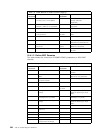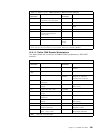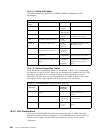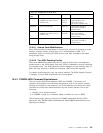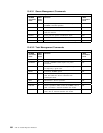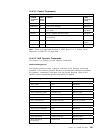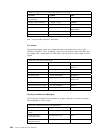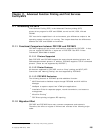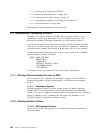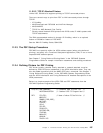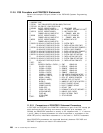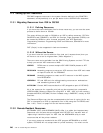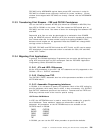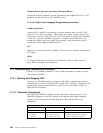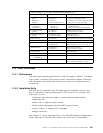
•
11.2, “Installing and Configuring PSF/MVS”
•
11.3, “Setting up AFP Resources” on page 240
•
11.3.4, “Migrating Print Applications” on page 241
•
11.4, “Understanding Operational Differences” on page 242
•
11.5, “Other Differences” on page 243
Other tasks are similar between the two platforms.
11.2 Installing and Configuring PSF/MVS
PSF/MVS is an optional feature of OS/390, and is already installed on your
SystemPac or part of your ServerPac. If you are already licensed for Print
Services Facility/MVS (PSF/MVS), 5695-040, you must explicitly enable it.
If you order the product with OS/390, the tailored IFAPRD00 member that IBM
ships with your order contains the required PRODUCT statements. Otherwise,
you must explicitly enable the licensed program when you run it with OS/390.
The following example shows the entry that you must include in the IFAPRDxx
parmlib member to enable PSF/MVS:
PRODUCT OWNER(′ IBM CORP′)
NAME(PSF/MVS)
ID(5695-040)
VERSION(*) RELEASE(*) MOD(*)
FEATURENAME(PSF/MVS)
STATE(ENABLED)
This should already be enabled with your ServerPac or SystemPac.
11.2.1 Defining Channel-attached Printers to MVS
This is similar to VSE. Use IOCP as described in Chapter 2 of the
PSF/MVS
Systems Programmers Guide
to define parallel or ESCON channel-attached
printers.
11.2.1.1 Attachment Options
PSF/MVS supports printers as system output devices for deferred printing
through JES2, or for direct printing under Direct Printer Services Subsystem
(DPSS). This way, the application program sends records directly to an attached
printer (or directly to PSF), bypassing the JES spool. See Chapter 8 in the
PSF/MVS Systems Programmers Guide
for details.
11.2.2 Defining Network Printers
11.2.2.1 SNA-Attached Printers
This is similar to VSE. See Chapter 3 in the
PSF/MVS Systems Programmers
Guide
for details.
236 VSE to OS/390 Migration Workbook



